Drew Barrymore's Mission
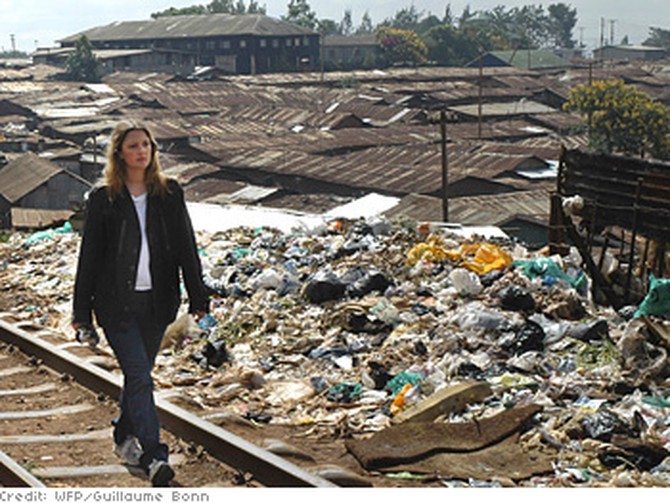
In March 2007, actress Drew Barrymore left Hollywood glamour behind when she traveled to Kenya to visit, among other things, the World Food Program's school feeding programs.
 Watch Drew visit schoolchildren in Kenya .
Watch Drew visit schoolchildren in Kenya .
The World Food Program (WFP) is the largest international food aid organization in the world and the United Nations' frontline agency in the fight against hunger. Every year, WFP feeds an average of 90 million people in more than 80 of the world's poorest countries.
With some 400 million hungry children in the world, Drew, an Ambassador Against Hunger for the WFP, has decided to push the plight of hungry children to center stage to ensure that more receive food and stay in school.
While in Kenya, she visited Nairobi's Kibera slums, home to more than a million people.
The World Food Program (WFP) is the largest international food aid organization in the world and the United Nations' frontline agency in the fight against hunger. Every year, WFP feeds an average of 90 million people in more than 80 of the world's poorest countries.
With some 400 million hungry children in the world, Drew, an Ambassador Against Hunger for the WFP, has decided to push the plight of hungry children to center stage to ensure that more receive food and stay in school.
While in Kenya, she visited Nairobi's Kibera slums, home to more than a million people.
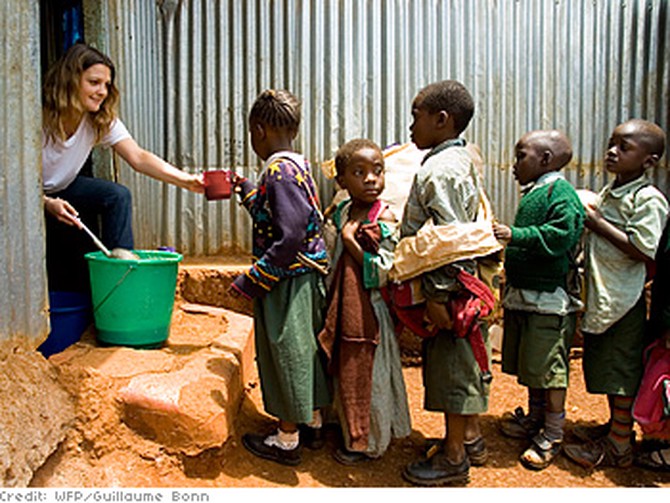
In Nairobi, Drew helped dish out lunches to children in the Kibera slums. She says her reason for focusing on school feeding is simple.
"School feeding not only fills stomachs, but has a proven track record of boosting enrollment, attendance and academic performance," she says. "For just pennies a day per child, this program changes lives—and ultimately can impact the futures of poor countries around the world in a profound way."
"School feeding not only fills stomachs, but has a proven track record of boosting enrollment, attendance and academic performance," she says. "For just pennies a day per child, this program changes lives—and ultimately can impact the futures of poor countries around the world in a profound way."
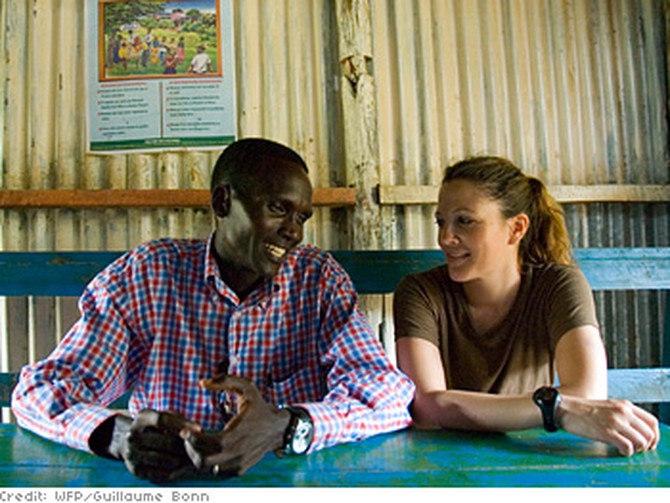
One person who can testify to the power of school feeding to change children's lives is Paul Tergat, a marathon world record holder.
As a hungry child in Kenya, Paul struggled to walk the three miles it took to get an education. This all changed in 1977, when WFP started distributing free lunches at his primary school in Kabarnet. Paul now campaigns on behalf of the WFP as a fellow Ambassador Against Hunger.
As a hungry child in Kenya, Paul struggled to walk the three miles it took to get an education. This all changed in 1977, when WFP started distributing free lunches at his primary school in Kabarnet. Paul now campaigns on behalf of the WFP as a fellow Ambassador Against Hunger.
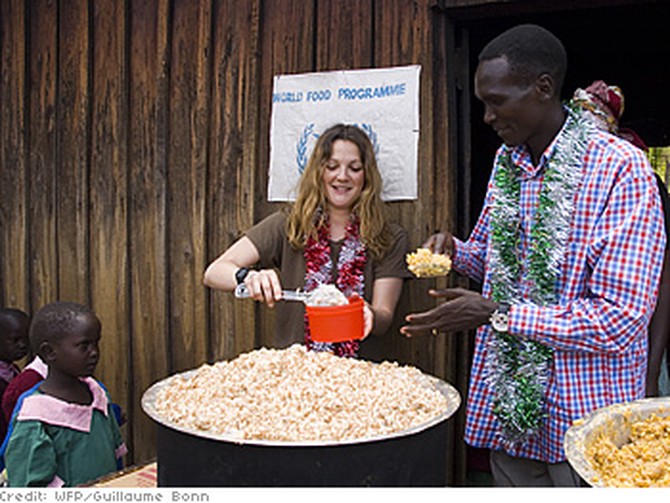
Drew and Paul travel to the Riwo School, the place where Paul once studied, to distribute the WFP's trademark red cups filled with food.
"Without food, it was very difficult to walk to school, let alone concentrate on our studies," Paul says.
"Without food, it was very difficult to walk to school, let alone concentrate on our studies," Paul says.
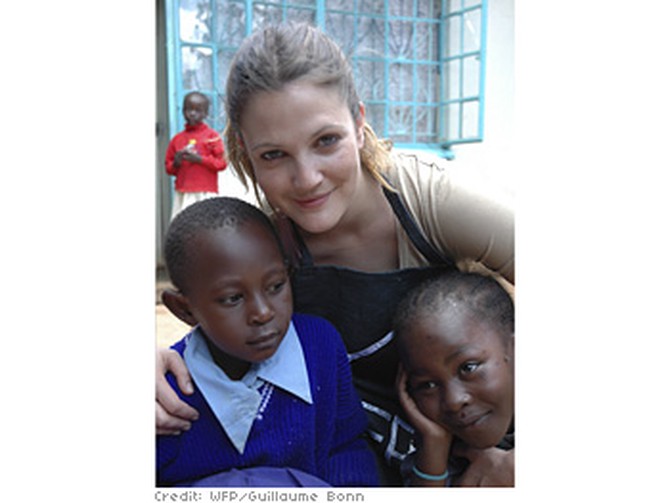
While in the Kibera slums, Drew met children living with HIV at the Lea Toto Outreach Program, which partners with WFP to provide medicine and food to these children.
HIV-positive children rely on WFP food to support the antiretroviral treatment they receive. According to the WFP, good nutrition is essential if the treatment is to work well. The combination of the drugs and nutritious food can improve the quality of life of people with HIV.
HIV-positive children rely on WFP food to support the antiretroviral treatment they receive. According to the WFP, good nutrition is essential if the treatment is to work well. The combination of the drugs and nutritious food can improve the quality of life of people with HIV.
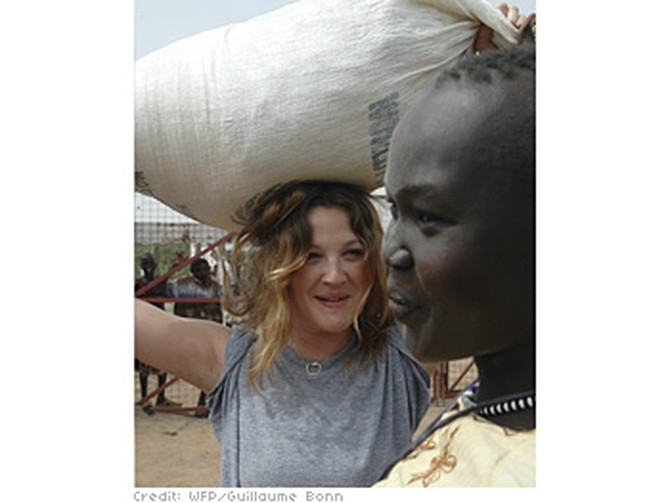
WFP rations are mostly distributed to women, who sometimes have to walk miles with the heavy sacks on their heads.
During a visit to Kenya's Kakuma refugee camp, Drew tried to carry a food sack on her head. She was astonished by how heavy it was!
During a visit to Kenya's Kakuma refugee camp, Drew tried to carry a food sack on her head. She was astonished by how heavy it was!
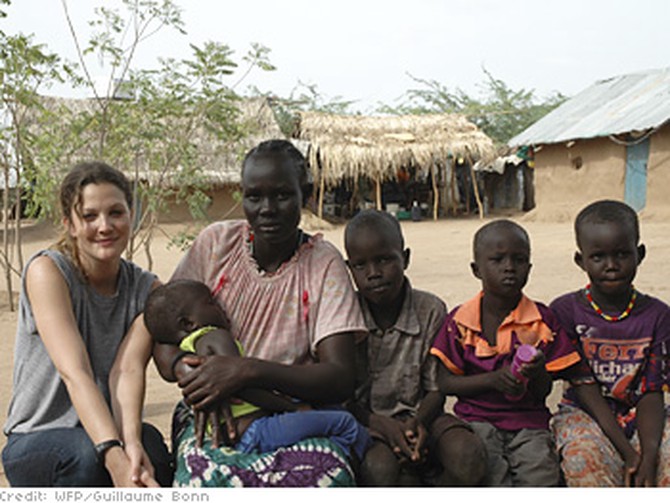
While in Kenya, Drew met Rebecca Ajar, a woman who fled to Kenya from Sudan. They discussed life in the Kakuma refugee camp.
Refugees such as Rebecca rely heavily on humanitarian agencies and nongovernmental organizations for food and support. Economic opportunities aren't always available in these camps.
To improve her opportunities, Rebecca attends school in the camp along with some of her children.
Refugees such as Rebecca rely heavily on humanitarian agencies and nongovernmental organizations for food and support. Economic opportunities aren't always available in these camps.
To improve her opportunities, Rebecca attends school in the camp along with some of her children.
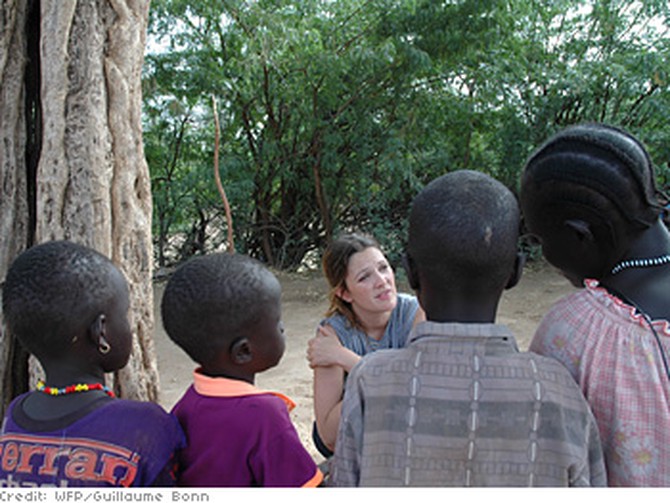
Drew also talked to three of Rebecca's children (pictured here with Rebecca). In 2006, the WFP's school feeding programs fed 20.2 million children in 71 countries.
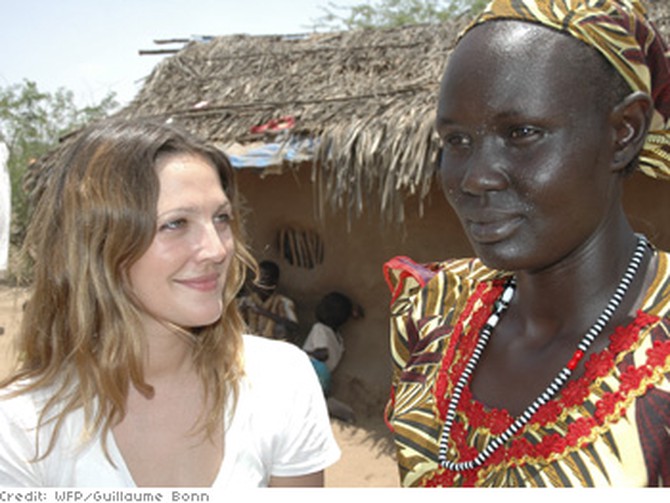
Before leaving the camp, Drew said goodbye to Rebecca. Then, not long
after their trip to Kenya, Drew, Paul Tergat and WFP's Executive Director
Josette Sheeran traveled to Washington, D.C., to drum up more government support
for the school feeding program.
Galvanized by her trip to see WFP projects and her new role as an Ambassador Against Hunger, Drew says, "I can't think of any issue that is more important than working to see that no school child in this world goes hungry."
Galvanized by her trip to see WFP projects and her new role as an Ambassador Against Hunger, Drew says, "I can't think of any issue that is more important than working to see that no school child in this world goes hungry."
Published 03/14/2008

